With three weeks remaining before the July 26, 1971 launch of the Apollo 15 Moon landing mission, the prime crew consisting of Commander David R. Scott, Command Module Pilot Alfred M. Worden, and Lunar Module Pilot James B. Irwin and their backups Richard F. Gordon, Vance D. Brand, and Harrison H. “Jack” Schmitt began their preflight medical isolation to minimize the chance of contracting and spreading a contagious illness. They continued to rehearse various aspects of their upcoming 12-day mission in flight simulators and training for their lunar traverses, that included setting up the scientific experiments. During their three-day stay on the lunar surface, the astronauts planned to double the time of any previous stay and explore 10 times farther during three excursions at the Hadley-Apennine landing site, aided by the Lunar Roving Vehicle.
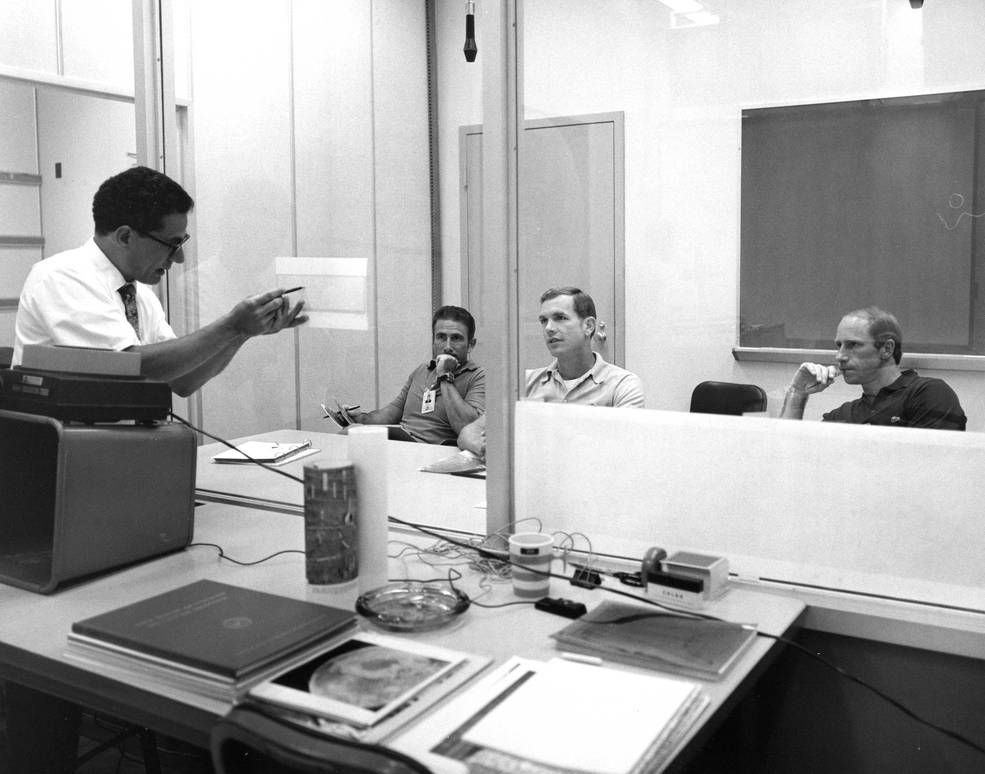
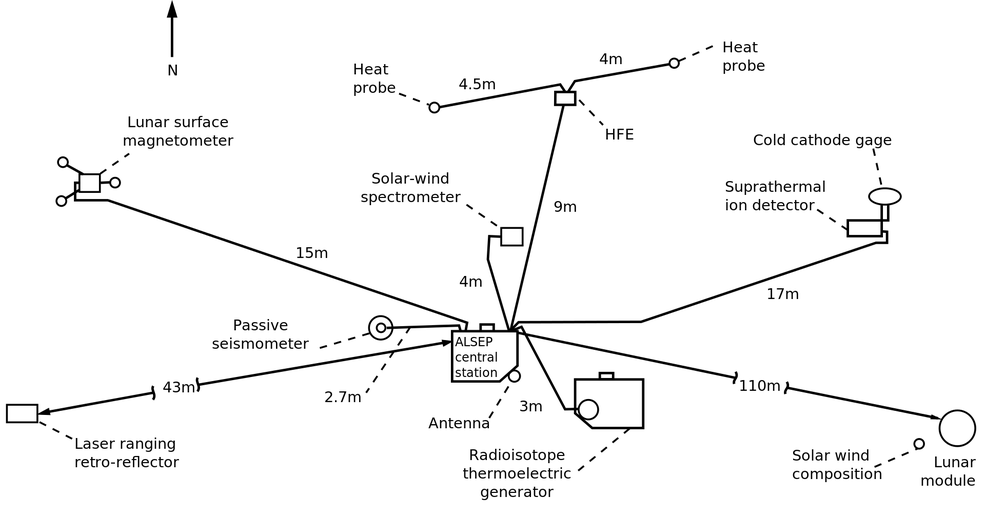
Left: NASA geologist Farouk al-Baz, left, briefing Apollo 15 astronauts James B. Irwin, David R. Scott, and Alfred M. Worden on lunar orbital geology at NASA’s Kennedy Space Center in Florida; al-Baz is separated from the crew by a glass partition in compliance with the Flight Crew Health Stabilization Program. Right: Schematic diagram of the placement of the Apollo Lunar Surface Experiment Package instruments at the Apollo 15 Hadley-Apennine landing site.
The prime and backup Apollo 15 astronauts began their preflight medical isolation on July 6, part of the Flight Crew Health Stabilization Program. During the last 21 days before any crewed launch, contact between the astronauts and ground personnel is strictly limited to prevent the spread of any contagious illnesses that could affect their health and impact any final training and possibly the launch date. Within these strict constraints, the astronauts rehearsed deploying the eight instruments of the Apollo Lunar Surface Experiments Package (ALSEP) at NASA’s Kennedy Space Center (KSC) in Florida. The ALSEP consisted of
- The Passive Seismic Experiment to detect lunar “moonquakes” and provide information about the internal structure of the Moon.
- The Heat Flow Experiment to measure the amount of heat coming out of the Moon’s interior. The experiment required the use of the lunar drill to place sensors 1.6 to 2.3 meters below the surface.
- The Lunar Surface Magnetometer to measure the strength of the Moon’s weak magnetic field.
- The Laser Ranging Retroreflector to measure very precisely the distance between the Earth and Moon.
- The Cold Cathode Gauge to measure the abundance of gases in the thin lunar atmosphere.
- The Suprathermal Ion Detector Experiment to study the lunar ionosphere.
- The Solar Wind Spectrometer to measure the composition of the solar wind.
- The Lunar Dust Detector to study the effects of lunar dust on the operation of the experiment package.
Once deployed at the Hadley-Apennine landing site, these instruments were expected to operate long after the astronauts left the lunar surface. Two additional experiments not part of the ALSEP suite included the Soil Mechanics Investigation to study the properties of the lunar soil and the Solar Wind Composition Experiment to collect solar wind samples for analysis back on Earth.
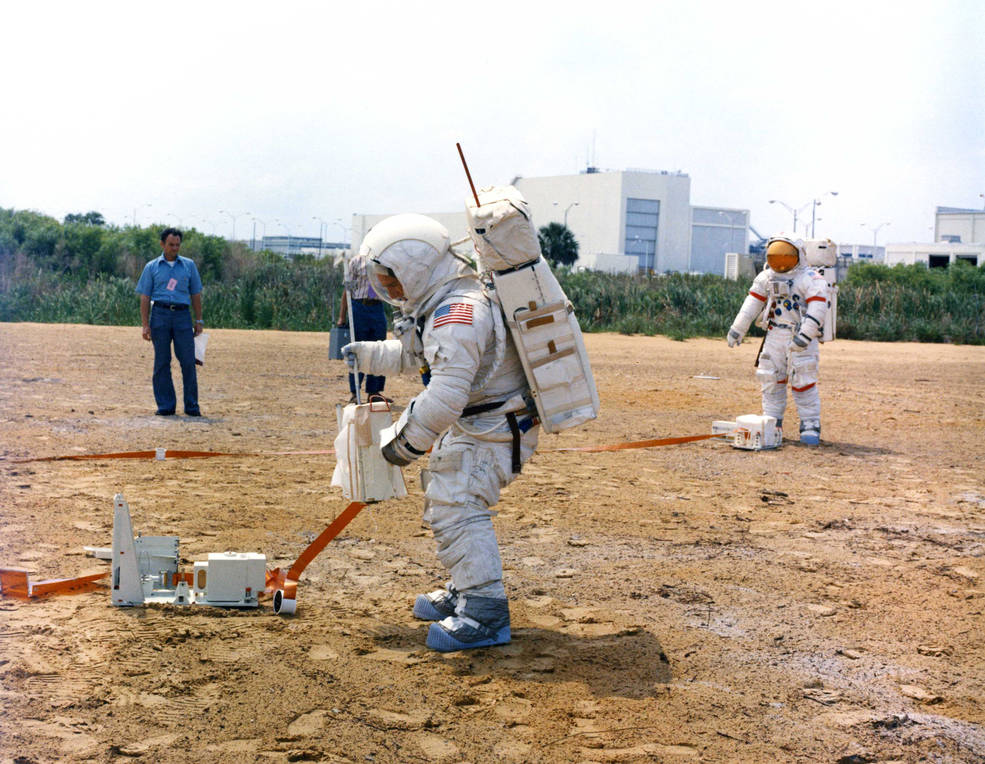
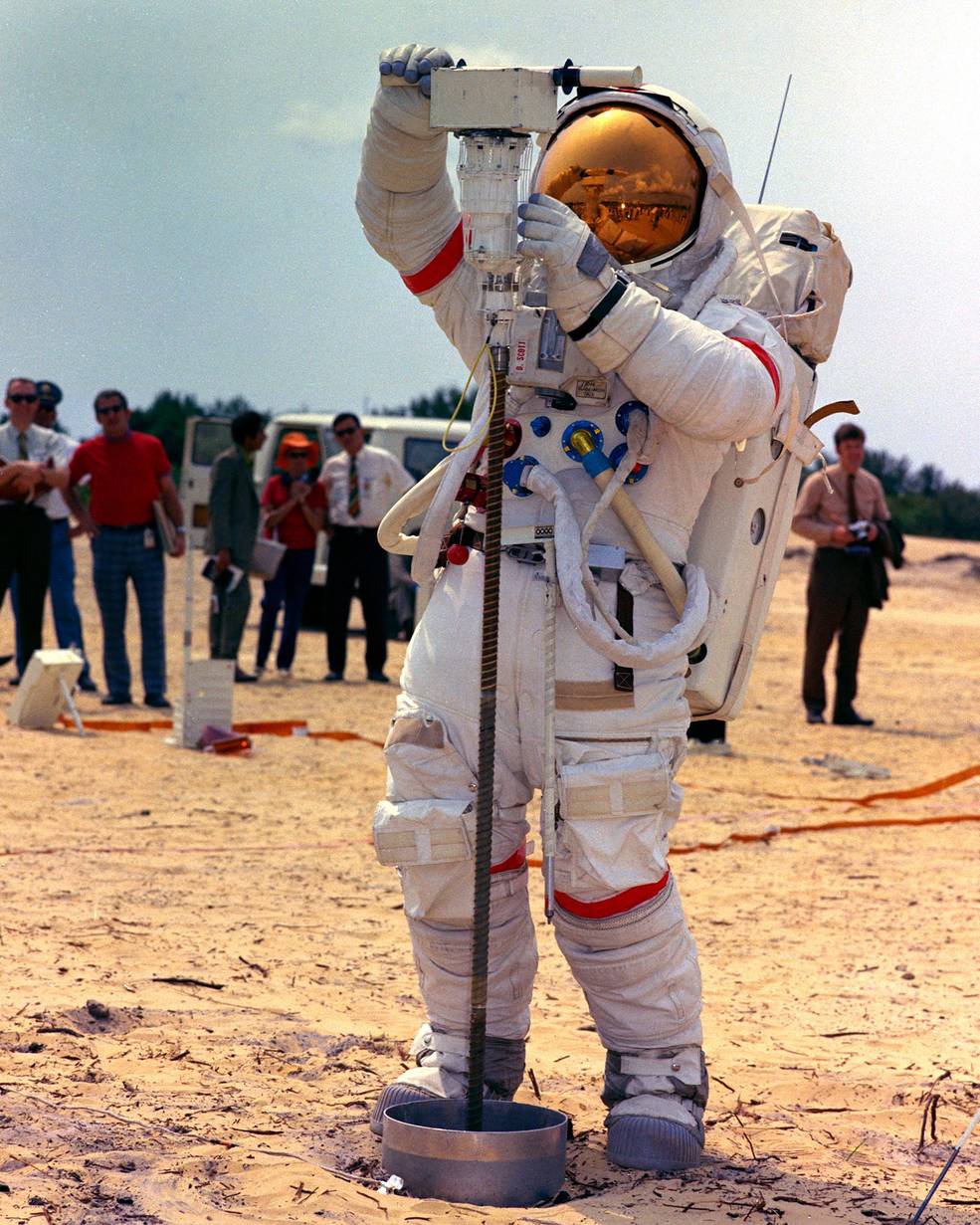
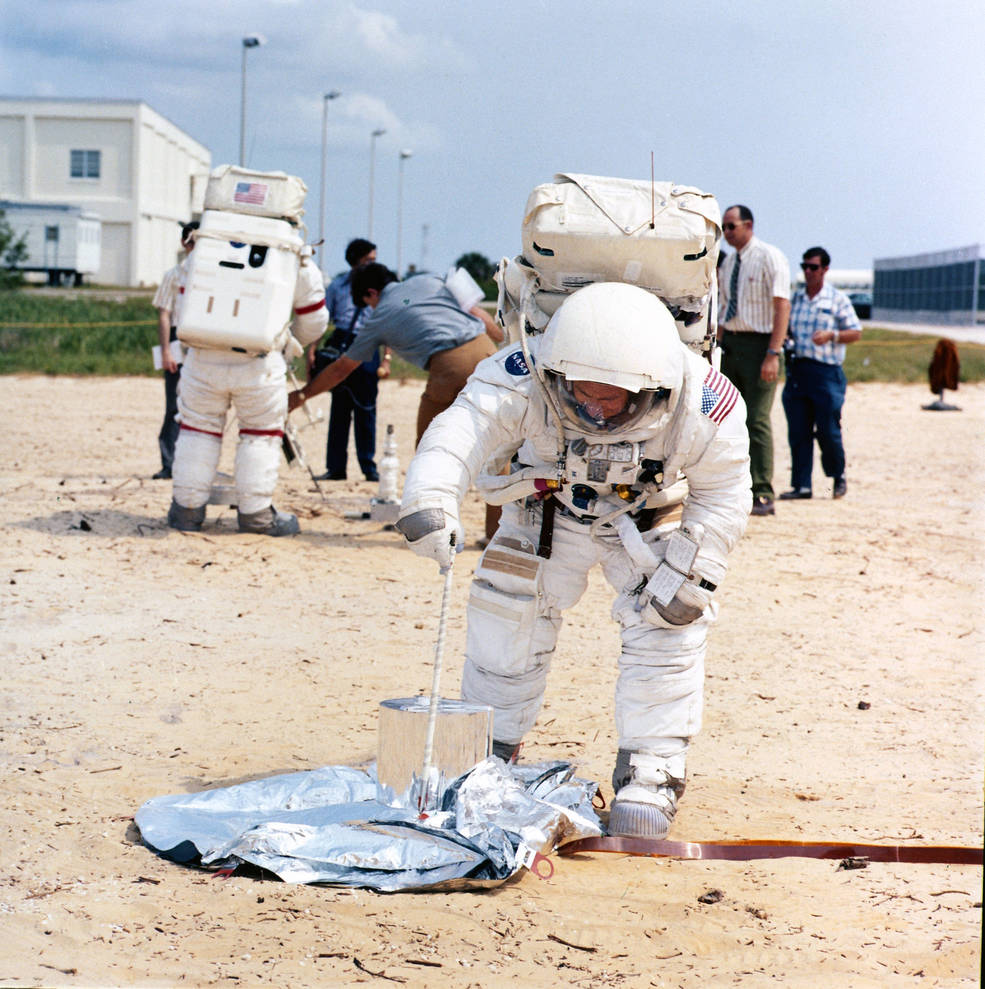
Left: Apollo 15 astronauts James B. Irwin, left, and David R. Scott unstowing and deploying some of the Apollo Lunar Surface Experiment Package instruments during training at NASA’s Kennedy Space Center in Florida. Middle: Scott uses the lunar drill to place the probes for the Heat Flow Experiment. Right: Irwin deploys the Passive Seismic Experiment.
During the final weeks of training, the Apollo 15 astronauts spent many hours in spacecraft simulators at KSC, rehearsing all aspects of their mission. Scott and Irwin ran many simulations in the Lunar Module simulator, while Worden rehearsed his solo time in lunar orbit in the Command Module (CM) simulator. All three crewmembers ran ascent and reentry simulations in the CM simulator. At Ellington Air Force Base in Houston, Scott and his backup Gordon completed their final flights in the Lunar Landing Training Vehicle on July 2 and June 26, respectively, simulating the final few hundred feet of the descent to the lunar surface. Both were then qualified to pilot the LM to the lunar surface.
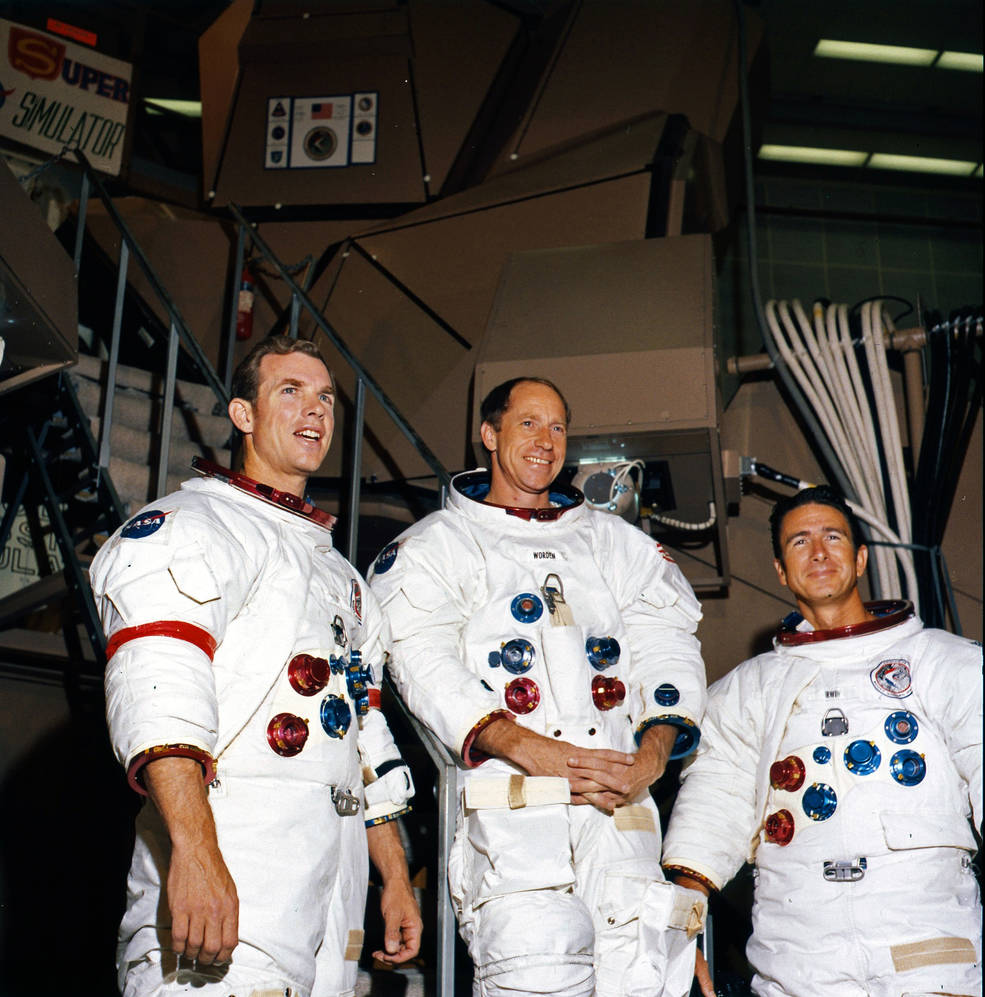
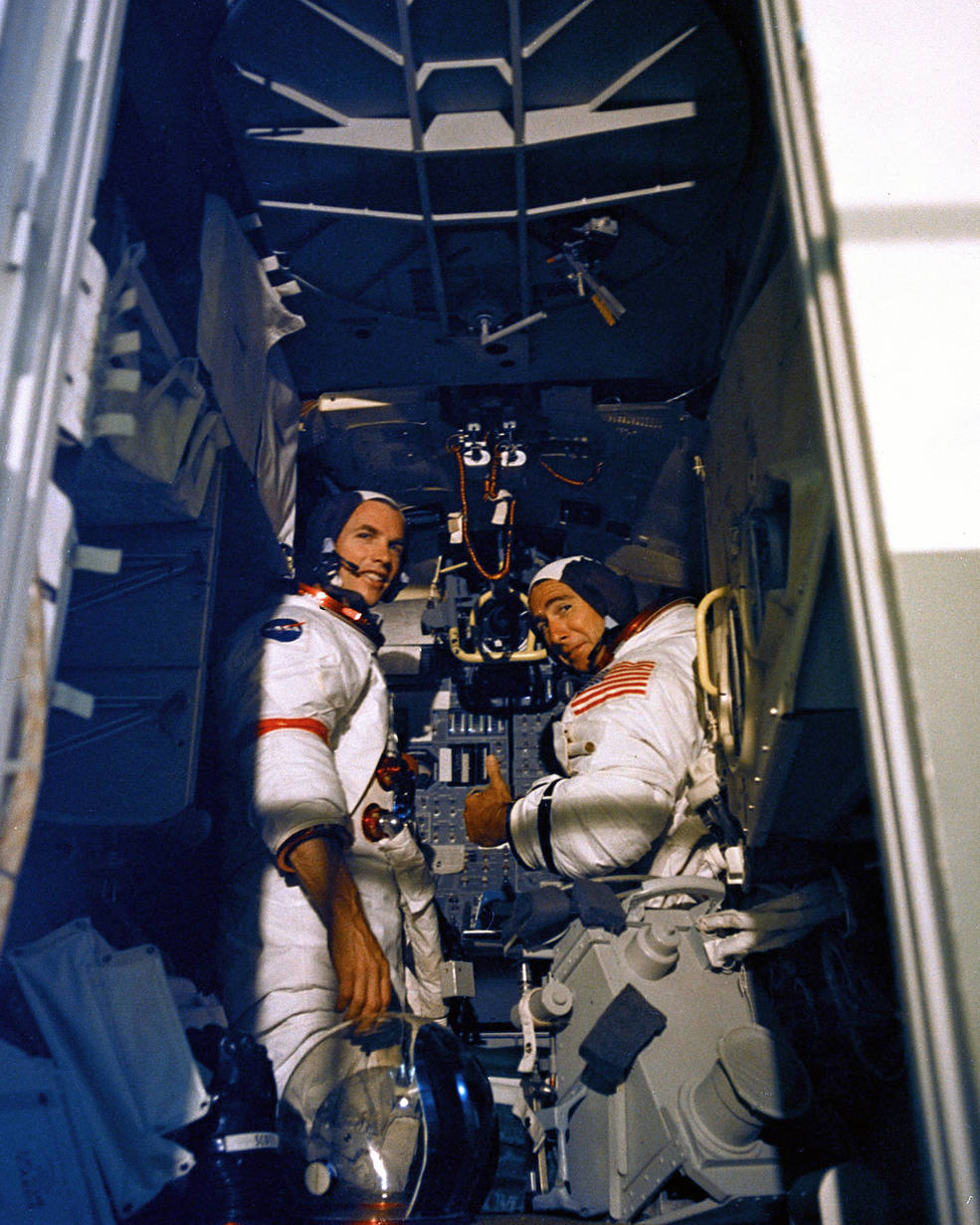
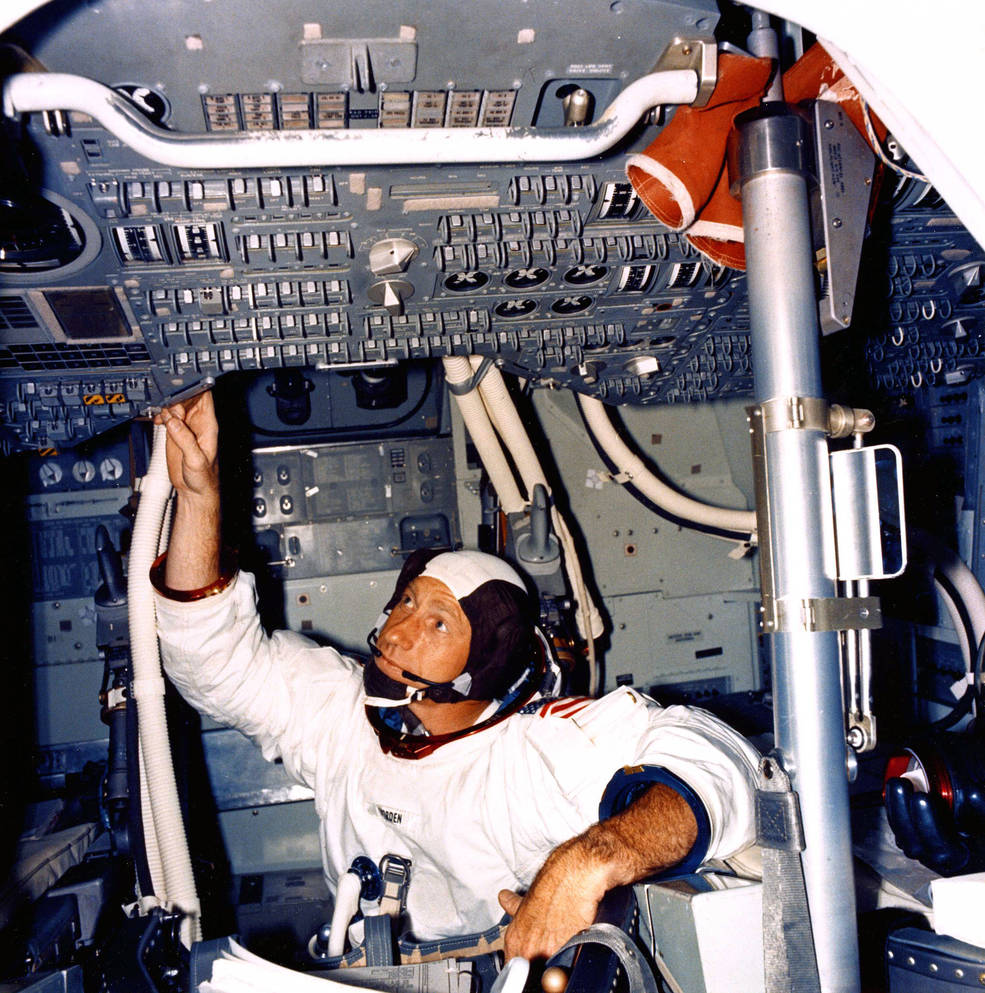
Left: Apollo 15 astronauts David R. Scott, left, Alfred M. Worden, and James B. Irwin pose outside the spacecraft simulator at NASA’s Kennedy Space Center (KSC) in Florida. Middle: Scott, left, and Irwin inside the Lunar Module simulator at KSC. Right: Worden inside the Command Module simulator at KSC.
John Uri
NASA Johnson Space Center

























